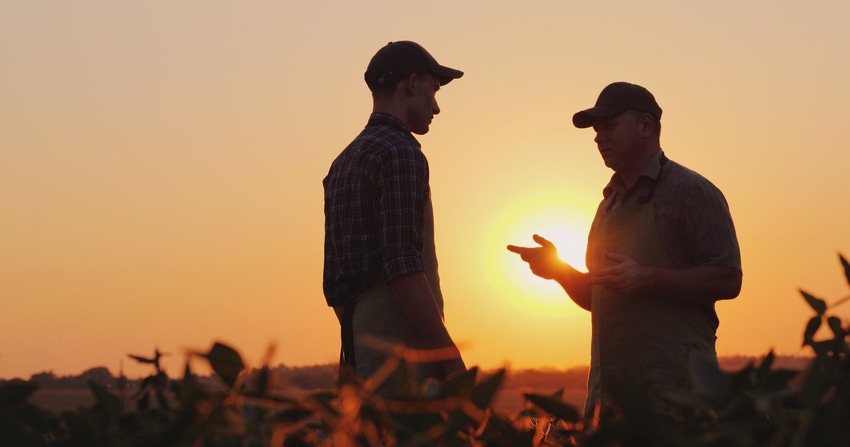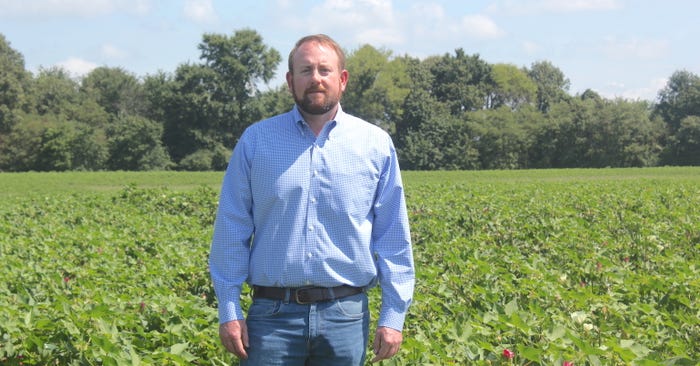
Producers faced a gauntlet of weather issues in 2022 and higher than average crop losses are expected in some parts of the Midsouth. As many producers head into harvest with the potential for crop loss — some for the first time in years — we asked a crop insurance specialist what steps they need to be taking this fall to best protect their operations.
Worth Eubanks, a crop insurance specialist with Farm Credit Mid-America, said his first piece of advice for growers who believe they may have a crop loss is start a conversation with your agent.
“Growers are responsible for letting an agent know when they have experienced crop loss, so as soon as you even think you’re going to have a loss, reach out to your agent,” Eubanks said.
“Some people may not realize they have a loss until the harvester starts going across the field. As soon as you realize that, go ahead and communicate this with your crop insurance agent. At that time the agent will open a claim, and that will begin a course of conversation between an adjuster and the insurance company.”
For Midsouth states, the absolute last date to turn in crop loss claims is Dec. 10 for corn and soybeans, Dec. 31 for cotton and Oct. 31 for rice. However, many policies stipulate that growers notify agents of losses within 72 hours of identifying probable cause of loss.
“The take home message is communication is key,” Eubanks added. “The earlier you start that communication with your agent, the better.”

Record keeping
Once loss is identified, farm record keeping takes on a new level of significance. Unfortunately, not maintaining diligent records is the most common mistake Eubanks has observed during his career in crop insurance.
“Your crop insurance is based on yields, but you also have to prove those yields and where they came from on the farm,” Eubanks said.
Producers often have different levels of coverage depending on crop type (irrigated or non-irrigated) or practice (full-season or double-cropped) so having documentation of where yields originated helps streamline the claims process.
Documentation includes hard records, such as settlement sheets from a grain elevator, or bin measurements performed by a third party. Soft records, such as a calibrated yield monitor reading, or grain cart scale measurements, are also acceptable and often help producers keep up with the location of harvested bushels.
“If there is anything I can stress, take a few extra minutes to document where your crop originated on the farm. Regardless of what policy you have, farmers who are organized have an easier time with the claims process,” Eubanks said.
Always label your records with your farm serial number or farm name and be sure to include the date of harvest.
Losses greater than $200,000 on a single crop and in a single county are subject to an indemnity review. With this year’s challenges, Eubanks expects there will be growers in his area who will meet these claim amounts.
During the review auditors will evaluate the previous year’s production records, according to Eubanks. If auditors find discrepancies, a grower will have to provide records for the past three years before a claim will be paid.
“Some good advice that I received early in my career is that the man with the most paperwork wins,” Eubanks said. “The more information producers can provide about bushels, the better.”
Have a loss? What’s next?
“When we turn in a claim, most of the time an adjuster will tell the farmer to go ahead and harvest the crop and keep track of yields,” Eubanks said. “But I also have producers considering chopping up some of this corn for silage or baling stalks. The biggest question I’m asked is ‘Are y’all going to make me harvest this?’”
“The short answer is no. In a scenario where you’re not planning to harvest, we will send an adjuster in to do an appraisal on the farm and estimate crop yield.”
“If a farmer does not agree with that number, and thinks the estimated yield is too high, he will have to harvest the crop to dispute the appraisal and show us what is actually there,” he said.
Marketing
“The incorrect attitude for a farmer going into a harvest where there is a potential loss is, ‘Well, it will be what it will be.’ You could be making decisions ahead of time from a marketing standpoint that could help offset losses,” Eubanks said.
As one example, Eubanks has worked with producers on leveraging crop insurance guarantee with losses on forward contracted grain.
“If current grain prices are higher than what a grower had booked and he realizes he will be short of filling a contract, it may be better to get out of the contract now, working off the idea that whatever bushels he can harvest will bring more in the fall, and whatever he picks up there will outweigh the penalty for that contract,” he said.
“Strategies will be different for each farm, and that goes back to good communication. Talk to your crop insurance agent and your lender to determine a marketing strategy that will be best for you,” he added.
Crop insurance planning
Eubanks also added that it is not too early to start planning for crop insurance needs for next season.
“The challenges of this season have emphasized where we have risk in our operations,” he said. “It may be a good time to revisit your coverage. There are so many options in crop insurance programs now, that you can really drill down to where you have the most risk and exposure.”
“Crop insurance is something many producers only think about one time of year, but if you’re only renewing your insurance each year you could be leaving money on the table.
“Planning ahead could help you maximize your coverage so you’re managing risk, but not wasting profit on premiums for insurance you’re not going to use.”
About the Author(s)
You May Also Like






